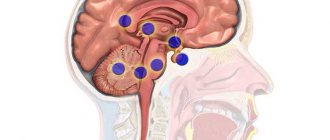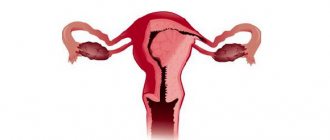Astigmatism: what is it? How to treat eye astigmatism at home? Astigmatism is a disorder of the optical structure of the eye in which the image of objects is incorrectly focused on the retina. As a result, a person sees objects blurry and distorted. The optics of the eye include the cornea and lens, respectively, and distinguish corneal and lens astigmatism, as well as general astigmatism of the eye system (cornea + lens).
The essence of the disease is a sharp violation of the refractive power of the optical function in the meridians: horizontal (weak) and vertical (strong). They are located perpendicular to each other. With the disease, there is a focus of light at different points, which does not reach the retina. Based on this, the specialist makes a disappointing diagnosis.
What it is?
Astigmatism is a violation of the sphericity of the lens or corneal surface. With the disease, the incidence of the light beam on the retina is disrupted. The focus is projected in front and behind the retina. Loss of focus leads to blurred vision. Blurring develops unevenly.
Nebula appears in isolated areas. Upon careful analysis, individual spots can be traced. Ophthalmologists say that a point shadow in pathology creates a linear image, therefore the perception of surrounding objects is distorted. A person with astigmatism sees an oval instead of a circle. [adsense1]
Eye astigmatism in adults - classification of the disease
Refraction (refraction) of light rays at one point on the retina is a necessary condition for obtaining a high-quality image. The optical system of the eye (shape of the lens, cornea, sclera) must meet certain parameters.
In cases where light rays do not have one focus, the outlines of objects become blurred and their sizes are distorted. The diagnosis of this disease is astigmatism. The disease can be congenital or acquired.
Manifestation of astigmatism
You can learn about moderate hyperopia with astigmatism and how such a disease is treated in this material.
There are corneal, lenticular, mixed (corneal-lens) astigmatism.
Lens astigmatism is less common than corneal astigmatism. The disease in all cases has the same symptoms and characteristics. Impaired corneal sphericity is the most common pathology of visual function.
The cornea acts as a lens, just like the lens. The angle of refraction of the rays depends on the uniformity of the thickness of its layer. With normal vision, the optical medium of the cornea is homogeneous, and the refraction is the same at any point. If pathological changes occur in the corneal layer, then the rays are refracted differently.
Research is often carried out using Rabkin's tables.
The degree of astigmatism is determined using the Tabo table: the distance between foci on the main visual meridians. The main meridians are two perpendicular axes in the eyeball. The distance between the foci is determined by the angular displacement from 0 to 180 degrees. counterclock-wise. The greater the deviation angle, the more pronounced the astigmatism.
Glasses for astigmatism are selected in a separate way.
The video shows a description of the disease:
Find out everything about eye diseases: a list of diseases and symptoms here.
Depending on the location of the angular difference, astigmatism occurs:
- straight line (angle with a vertical meridian);
- reverse (angle with the horizontal axis);
- oblique (focus axes are within 30-50 degrees or 120-150 degrees).
The disease becomes more complicated if astigmatism is combined with myopia or farsightedness. In such cases, a complex and mixed type of refractive error occurs.
Night lenses are also used to restore vision in astigmatism.
Causes
The main cause of eye astigmatism is the incorrect configuration of the optical system. It appears when the cornea has an uneven curvature or an irregularly shaped lens. Astigmatism can occur due to congenital uneven pressure of the eyelids, orbital bones and extraocular muscles.
If ocular astigmatism has an acquired form, then it could be provoked by the following factors:
- carrying out ophthalmological operations - in this case, the main reason for the development of astigmatism may be incorrect sutures on the cornea in which the incision was made, which can lead to a change in its shape, namely, if the edges of the wound are very tightly tightened, when the sutures come apart or are removed prematurely;
- various types of injuries from sharp or piercing objects, which resulted in scarring of the cornea or subluxation of the lens;
- clouding of the cornea due to an inflammatory process;
- keratoconus is a pathology of the cornea that causes its thinning, as a result of which it acquires a pointed, conical shape;
- injuries to the structure of the dental system - irregular structure of the upper jaw and its strong protrusion forward, as well as the absence of a large number of teeth can lead to deformation of the walls of the orbit, which in turn will contribute to the development of astigmatism;
- Pterygium is the growth of the conjunctiva onto the cornea, often occurring with long and frequent exposure to the sun.
Often this disease is inherited. In this regard, if one of the parents has astigmatism, the child should be examined by an ophthalmologist as early as possible.
What is astigmatism
Before treating astigmatism, you need to understand what it is. The pathology is classified as a class of refractive errors associated with changes in the shape of the cornea or lens. The process is characterized by the following mechanisms:
- rays, penetrating inside the eye, are scattered incorrectly;
- as a result, a distorted image is formed;
- a person sees the world around him as if he were myopic, only the pathology can be accompanied by farsightedness, in which blurring of objects occurs at a distance.
Among the causes of astigmatism in adults are: constant eye strain, structural features of the organ of vision, as well as injuries. The types of disease are classified according to the type of cause:
- Congenital astigmatism . It is more common than acquired and is caused by hereditary factors. Associated with abnormal pressure inside the eyeball, muscles, and also in the area of bone tissue. Congenital pathology manifests itself not only immediately after birth, but also at an older age - in primary or secondary school.
- Acquired type . Most often, such astigmatism in adults develops due to previous operations or injuries. The condition is caused by scarring, clouding or inflammation of the corneal tissue.
The lesion can be recognized only after diagnostics. Astigmatism has no specific symptoms in adults.
Early stage symptoms
Among the primary signs of astigmatism, general indicators of vision problems stand out:
- difficulty focusing your gaze, attributing blurry images to fatigue;
- occasionally there are unreasonable attacks of burning, redness and dryness of the eyes;
- from time to time objects begin to split into two;
- clarity of vision gradually decreases;
- sometimes pain appears when working with reading, computers, papers;
- It becomes difficult to estimate distances.
However, all these signs are a factor in the development of many other eye diseases.
Danger of pathology
This is why astigmatism is dangerous for adults: lack of treatment leads to strabismus, as well as a rapid decline in vision. The pathology especially severely affects the organs of vision that are susceptible to other diseases. It is important for people with this disorder to visit an ophthalmologist every 3-6 months to monitor the situation.
Is it curable or not?
A complete cure for astigmatism in adults is possible, but only if an integrated approach is followed. In the initial stages, you can use vitamins, exercises and laser correction. In severe cases, and also when the disorder cannot be treated, surgical intervention can be resorted to.
Classification
Astigmatism is usually divided into 3 types, which are directly related to the state of farsightedness or myopia:
| Myopic | meridians are affected by myopia (one at a time or together). |
| Hypermetropic | meridians are affected by farsightedness (one or both). |
| Mixed | This type of astigmatism has both farsightedness and nearsightedness. |
All these types can develop against the background of the following deviations:
- Direct or reverse astigmatism (location of meridians and their interval).
- Lens or corneal astigmatism (discussed above).
It is worth noting that with slight astigmatism, people do not notice any particular deterioration in vision, but depending on its type, primary symptoms may appear in the form of double vision, dizziness and blurriness.
Types of astigmatism
Now let's take a closer look at the types of this disease.
Accompanying pathologies
So, you probably know that vision based on the ability to see can be:
- normal - emmetropia;
- nearsighted - poor distance vision;
- farsighted - poor near vision.
Astigmatism most often accompanies other visual impairments, namely farsightedness (myopia) or nearsightedness (hypermetropia).
- In the case of myopia, we talk about myopic astigmatism. Be sure to read all about this type on the corresponding page on our website.
- In the case of farsightedness, we are talking about hypermetropic astigmatism. On our website you will also find a detailed article about this type of disease.
Meridian damage
To understand the following difference, you need to know what the meridians of the eye are. So, these are conditional lines that are located perpendicular to each other, one in the horizontal and the other in the vertical plane. Moreover, both of them are on the surface of the eye.
Only one meridian, vertical or horizontal, or both can be affected. Based on this feature, astigmatism is divided into:
- simple - in one of the meridians there is either nearsightedness or farsightedness, and in the other there is normal vision;
- complex - myopia and farsightedness are diagnosed in two meridians at once;
- mixed - in one of the meridians there is myopia, and in the other there is farsightedness.
The first two types (simple and complex) are divided into myopic and hypermetropic. But we'll talk about this below.
Symptoms
Symptoms of astigmatism may be minor and will become more severe over time. It is important to detect this disease in time and take the necessary medical measures - first of all, consult an ophthalmologist.
The main symptoms of astigmatism:
- constant eye fatigue;
- irritation of the eyeball;
- blurred or distorted image;
- difficult to focus (especially while reading);
- visual fatigue;
- difficulty viewing near and distant objects;
- headaches in the superciliary region.
It is important to notice deterioration in vision in a timely manner and promptly correct it with glasses, lenses or other restoration methods. [adsense2]
Symptoms and consequences of astigmatism
Myopic astigmatism, like hyperopic astigmatism, manifests itself with quite striking characteristic symptoms. It is easy to diagnose already during the initial examination. Regardless of concomitant diseases, the patient has poor vision both far and near.
If astigmatism is not diagnosed and correction is not selected, then it can affect the course of acute eye diseases: conjunctivitis, blepharitis. Severe forms of the disease can cause headaches and dizziness.
It is important to start treatment on time, as astigmatism can lead to serious complications, amblyopia and strabismus. Amblyopia is the weakening of one eye, which gradually stops working at full capacity. As a result, the dominant eye performs its functions, and strabismus appears in the second. It is especially important to select a correction for children when the risk of complications is high.
As for prevention, it is difficult to avoid astigmatism; it does not depend on visual hygiene and is either a hereditary disease or a consequence of injuries to the optical system of the eye.
Diagnostic methods
If astigmatism is suspected, the specialist conducts a comprehensive examination. Among the techniques stand out:
- visometry - checking visual acuity using special medical tables;
- skiascopy, or shadow test (diagnostic procedure using spherical and cylindrical lenses to determine the degree of refraction);
- refractometry (hardware method for more detailed information about refractive pathologies of the eye);
- keratotopography (computer technique for obtaining a topographic map of the surface of the cornea).
To identify the causes that led to astigmatism, biomicroscopy, ophthalmoscopy and ultrasound examination are used.
Methods for diagnosing astigmatism
To diagnose this pathology, the following instrumental methods are used:
- Visometry is one of the most common methods in which a person puts on a special frame and closes one eye with a shutter, and lenses with different refractive powers are placed in front of the other and in this way visual acuity and refraction are determined in both meridians.
- Skiascopy is the determination of refraction using the movement of the shadow in the pupil due to rocking movements; this method uses an indirect ophthalmoscope.
- Refractometry is a method of determining refraction using drops that help dilate the pupil.
- Biomicroscopy – identifying possible causes of pathology using a biomicroscope.
- Ophthalmometry is a method by which the fundus and vitreous body are examined.
- Ophthalmometry together with ultrasound are used to determine the size of the eyeball.
- Computed keratopography is the most accurate method for diagnosing astigmatism, establishing its type and degree.
Visometry is one of the most common methods for diagnosing astigmatism.
These methods make it possible to accurately diagnose, identify astigmatism or other eye pathologies that have similar clinical manifestations and disturb the patient.
Advice! If you do not consult a specialist in time, then in the future, when treating astigmatism, you will need to spend much more time and effort, and in more advanced cases, the disease cannot be treated at all.
Treatment of astigmatism
The effectiveness of correction and treatment of astigmatism is determined by its type and degree. For example, regular astigmatism can be quite easily corrected with special contact lenses or glasses, while irregular astigmatism is difficult to treat and often requires surgery.
To correct and treat astigmatism, you can use:
- glasses;
- contact lenses;
- surgical treatment;
- lens replacement;
- laser correction;
- gymnastics for the eyes.
[adsen]
Astigmatism: types
The choice of treatment method for astigmatism depends not only on its type, but also on its type. To accurately determine the main meridians of the disease, use the “TABO” scale from 0° to 180°.
| Type of astigmatism | Peculiarities | Manifestations |
| Direct (most common) | The vertical meridian at an angle of 90° has the greatest refractive power. | Patients clearly see vertical lines. |
| Reverse (rarest) | The horizontal meridian has the greatest refractive power. It lies along the axis from 0° to 180°. | Patients clearly see horizontal lines. A sharp decrease in vision over a short period of time. |
| With oblique axles | The main meridians are located in sectors from 30 to 50 or from 120 to 150 °. | Patients have difficulty seeing both vertical and horizontal lines. |
Spectacle correction of astigmatism
For astigmatism, special “complex” glasses with special cylindrical lenses are most often prescribed. Experts mention that wearing “complex” glasses in patients with a high degree of astigmatism can cause unpleasant symptoms, such as dizziness, pain in the eyes, and visual discomfort.
Unlike simple glasses, the prescription for astigmatic “complex” glasses contains information about the cylinder and the axis of its location. It is very important that the patient undergoes a thorough diagnosis before selecting glasses.
Since there are often cases when a person diagnosed with astigmatism has to change his glasses several times.
Degrees of the disease
According to the complexity of the disease, there are 3 degrees of it:
- weak (impairments within no more than 3 diopters);
- medium (pathological changes from 3 to 6 diopters);
- severe (visual impairment of more than 6 diopters).
There is also physiological astigmatism. This diagnosis means changes that do not lead to visual impairment (less than 1 diopter). Patients with this diagnosis, as a rule, do not need treatment, but regular examinations by an ophthalmologist are necessary for them. The fact is that the disease can progress and quickly move from a physiological form to a pathological one. In order not to miss this moment, you need to be regularly examined by an ophthalmologist and closely monitor the slightest deterioration in vision.
Contact lenses for astigmatism
To treat astigmatism, contact lenses are selected according to the same principles as lenses for glasses. However, it is worth noting that compared to glasses, lenses have a number of advantages.
The advantages of contact lenses over regular glasses include:
- Constant distance to the retina. When wearing glasses, they (glasses) constantly shift a few millimeters forward or backward, as a result of which the focal length of the lenses also shifts. This leads to a decrease (albeit insignificant) in visual acuity and accommodation stress. When using lenses, the distance from them to the retina is always the same, which ensures stable correction of astigmatism.
- More effective vision correction. When wearing glasses, there is a certain distance between the lens and the cornea (10 - 12 mm), which creates additional “interference” in the path of light rays. The lens is fixed directly on the cornea and is in close contact with it, forming a single refractive system, which significantly increases the effectiveness of vision correction.
- Cosmetic effect. Many people are embarrassed to wear glasses and feel awkward wearing them. Contact lenses are invisible and cause virtually no discomfort to the wearer, making them an ideal solution for such patients.
To correct astigmatism, the following can be used:
- Hard contact lenses. They are made of durable polymers, as a result of which they retain their constant shape. Moreover, a rigid contact lens and the tear fluid that accumulates between it and the cornea to a certain extent contribute to the alignment of the cornea, resulting in a decrease in the degree of astigmatism and improved visual acuity.
- Soft contact lenses. They are made of soft materials and can be spherical, cylindrical or spherocylindrical (toric).
It is worth noting that an important issue when prescribing contact lenses is the method of fixation. When using a spherical lens, this is not so important, since it has the same refractive power throughout its entire length. At the same time, when using cylindrical or toric contact lenses, it is extremely important that the axes of the cylinders are located strictly perpendicular to the affected meridians, otherwise they will not have the desired effect.
Congenital and acquired astigmatism
The congenital form of the disease is especially common, which is caused by pathological processes during the formation of the visual organs at the early stage of fetal development. Congenital astigmatism is usually inherited from parents and therefore develops at an early age. If one of the parents suffers from an illness, it is necessary to check the child for the presence of the disease as early as possible, as it can progress.
Having difficulty focusing their vision, children resort to certain techniques: tilting their heads to the side, squinting, bringing their eyes together, etc. If the disease is not identified and treatment is not prescribed, then such correction methods will lead to the formation of persistent strabismus, which persists even after the root cause has been eliminated.
Children also squint if they have difficulty focusing their vision.
There are congenital physiological astigmatism and pathological. The refractive differential in the main meridians in the first case is minimal. Minor astigmatism of 0.5 diopters is associated with spasmodic growth of the eyeball in children, which causes a barely noticeable deformation. And even astigmatism of 0.75 - 1 diopter does not in any way affect the visual function of the eye without correction.
If the abnormal refractive index exceeds 1 diopter, the condition is pathological in nature, accompanied by a decrease in visual acuity and requires special treatment.
Congenital astigmatism causes much more harm than that acquired with age. From birth, a child perceives images distorted, which leads to inhibition of the development of the visual apparatus as a whole.
Acquired astigmatism can manifest itself at any age, since it is not associated with congenital pathology and physiological processes in the body. The disease develops under the influence of external factors that lead to defects in the cornea and/or lens. Possible reasons why acquired astigmatism occurs:
Eye trauma can also lead to astigmatism
- Injuries - damage to the eye from cutting or sharp objects, subluxation of the lens, rupture of its ligaments;
- Keratitis - inflammatory processes in the cornea as a result of infection, exposure to chemicals or physical action, resulting in bending of the cornea and disruption of its integrity;
- Acute keratoconus is a disease of the cornea, as a result of which it becomes thinner and becomes conical;
- Pathologies of the dental system - diseases of the teeth or upper jaw that lead to deformation of the orbits, such as open bite, absence, protrusion of the upper jaw forward, others;
- Difficult childbirth - applying forceps to the fetal head, squeezing, causing deformation of the orbits and eyes;
- Surgical treatment of the eyes can become a source of development of induced astigmatism, that is, caused by external intervention. Excessive tightening of sutures on a corneal wound can significantly change its shape, as can early removal of sutures when the edges of the incision diverge due to increased intraocular pressure.
Excimer laser correction of astigmatism
In recent years, excimer laser correction has been most often used to treat astigmatism (up to ±3.0 D). Laser correction using the LASIK technique can hardly be called an operation. This procedure is carried out for 10–15 minutes under local drip anesthesia, while the laser exposure does not exceed 30–40 seconds, depending on the complexity of the case.
During vision correction using the LASIK method, a special device, a microkeratome, separates the surface layers of the cornea with a thickness of 130–150 microns, allowing the laser beam access to its deeper layers. Then the laser evaporates part of the cornea, the flap is returned to its place and fixed by collagen, the cornea’s own substance. No sutures are required, as epithelial restoration along the edge of the flap occurs naturally.
After vision correction using LASIK, the recovery period is minimal. The patient begins to see well within 1–2 hours after the procedure, and vision is finally restored within a week.
Reverse astigmatism
Having this pathology, a person perceives horizontal lines more. The disease appears quite rarely and brings a lot of trouble and discomfort.
Treatment of reverse astigmatism
Therapy and correction are carried out using three methods: surgical, glasses and lenses. Patients should use correction using optics, or in more difficult cases, surgery. After similar procedures, vision improves within a day.
Laser therapy is the best method for restoring visual functions. It only takes a few minutes for vision to be restored. It is used for pathologies of mild to moderate severity. Not suitable for children. They also don’t do it at retirement age. The doctor gives permission for the procedure. The laser corrects the shape of the cornea, thereby restoring vision. Visual perception is restored 90 minutes after such correction.
Lens replacement is also used, but only at the initial stage of the pathology. The procedure is not performed until the age of 45. The natural lens is removed and an artificial one is installed in its place. Helps not only with this disease, but also with various eye problems.
Surgical intervention
Surgical treatment consists of creating deep incisions around the perimeter of the cornea, changing its curvature. After surgery, the recovery period can last a long time.
The choice of treatment regimen depends on the degree of pathology identified during diagnosis, the presence of scar tissue and the age of the patient.
Treatment of children begins with spectacle correction of astigmatism; the safety of LASIK allows this technique to be used in pediatric practice.
It is important for patients with astigmatism to constantly monitor their vision with a doctor, changing glasses and undergoing preventive courses of treatment. You need to know that wearing the same lenses and glasses for the entire period is not acceptable, since in the process of straightening the cornea, changes occur that require replacement and corrective therapy.
An ophthalmologist can issue a special instruction sheet with prescribed eye exercises for the treatment of astigmatism. Regular gymnastics will prevent further loss of vision and, in combination with the main treatment regimen, will lead to a pronounced positive result.
Treatment and methods of vision correction
Astigmatism in adults is treated in three main ways: glasses, contact lenses, and laser method.
Correction with glasses
This correction involves the use of glasses with cylindrical lenses, or otherwise called complex ones. Correct selection of appropriate glasses requires a careful and accurate diagnosis. In severe cases, wearing complex glasses can cause headaches, discomfort, and pain in the eyes.
Important! Selecting glasses yourself is not allowed, otherwise this can provoke further deterioration.
Cylindrical lenses are recommended for people diagnosed with nearsighted or farsighted astigmatism. With a mixed type of disease, the use of glasses with toric lenses is recommended.
Along with other methods, vision correction with glasses remains the most common due to its accessibility, ease and ease of use. If they break, it is enough to simply replace them. The doctor may also prescribe additional use of the drug Pentovit, which will provide the body with the missing B vitamins, as well as Oko-plus drops that help restore vision, but you should be wary of purchasing a counterfeit. Oko-plus drops can really give effective results.
When choosing glasses, you must follow some rules
- It must be remembered that cylindrical glass is prescribed for a simple shape, and for a complex or mixed one, sphero-cylindrical glass is used.
- When selecting glasses, you need to use a universal frame, with which you can determine the required cylinder, equal to the degree of the disease.
- For the myopic form, the cylinders need to be placed in a horizontal position, and for a diagnosis of farsightedness, the cylinders must be placed vertically.
When astigmatism is established in only one eye, glasses are made with different lenses, one of which is intended to correct the astigmatic eye, the other for normal vision.
Contact lenses
Until recently, there were only rigid lenses, which did not suit all patients equally well. Due to its specific structure, it sometimes created discomfort and a negative effect on the cornea. However, now innovative toric lenses have appeared, which have managed to collect a large number of positive reviews.
Forecast and prevention of astigmatism
If astigmatism is untimely or inadequately treated, a sharp decrease in visual acuity, amblyopia, and strabismus may develop. The criteria for a high-quality correction of astigmatism is an improvement in the quality of binocular vision.
Prevention of astigmatism consists of rational distribution of visual loads, alternating them with special eye exercises and physical activity, preventing injuries and inflammation of the cornea. To identify congenital astigmatism, it is necessary to conduct a medical examination of children in accordance with the age schedule. Prevention of secondary complications requires timely optical correction of astigmatism.
Features of the disease in children
Most often, the disease in children is congenital, but by the age of one year in most it disappears without a trace. If in the future the child has simple astigmatism, and all its signs remain, then this indicates that vision problems cannot be avoided. Therefore, frequent visits to the doctor will help reduce these negative health effects to a minimum.
If a mixed form of the disease is detected in a child, and the astigmatism of the left and right eyes differs in hypermetropia of one meridian and myopia of the other, this means that problems are observed in both simultaneously. This form of the disease requires immediate treatment with serious vision correction.
Important! Astigmatism up to 0.75 diopters is considered normal and does not have a negative impact on human health.











